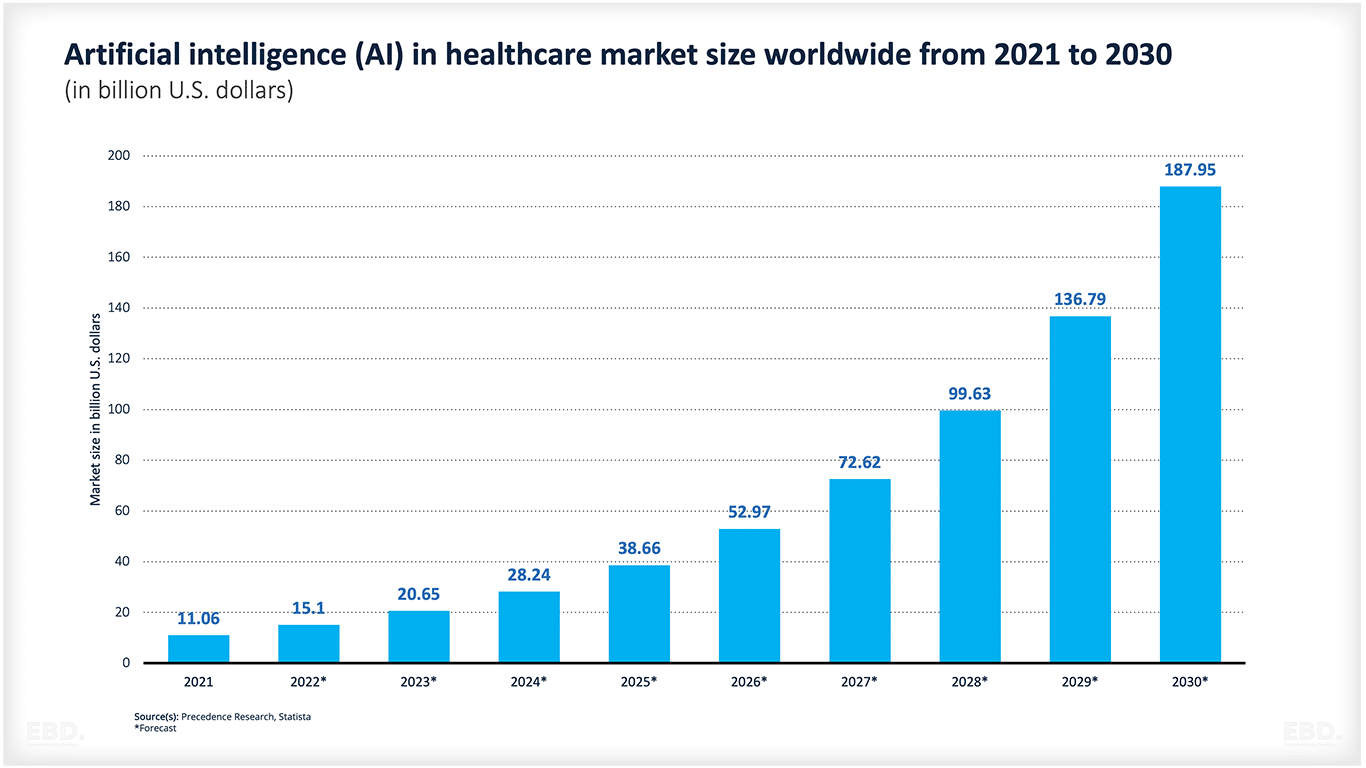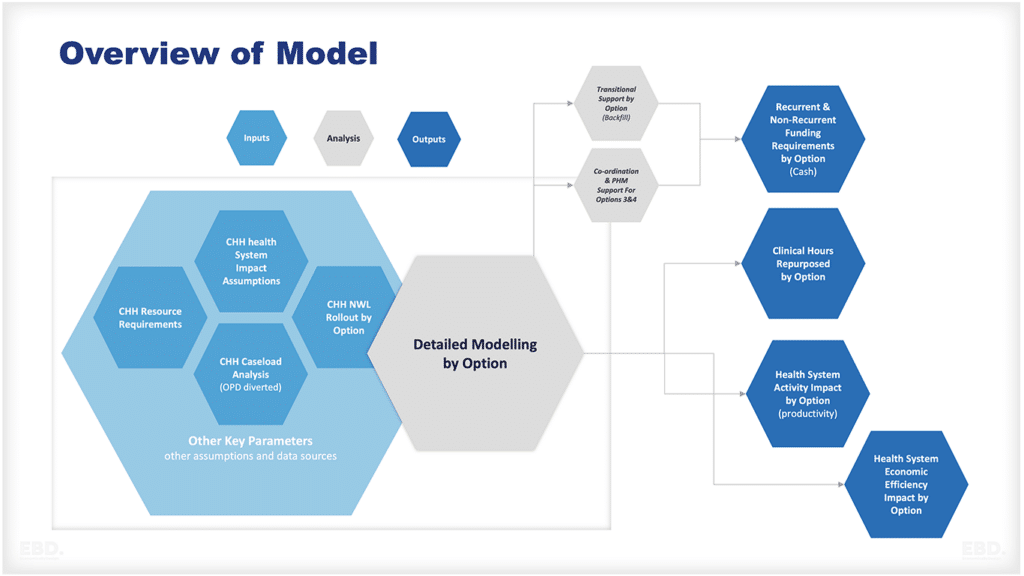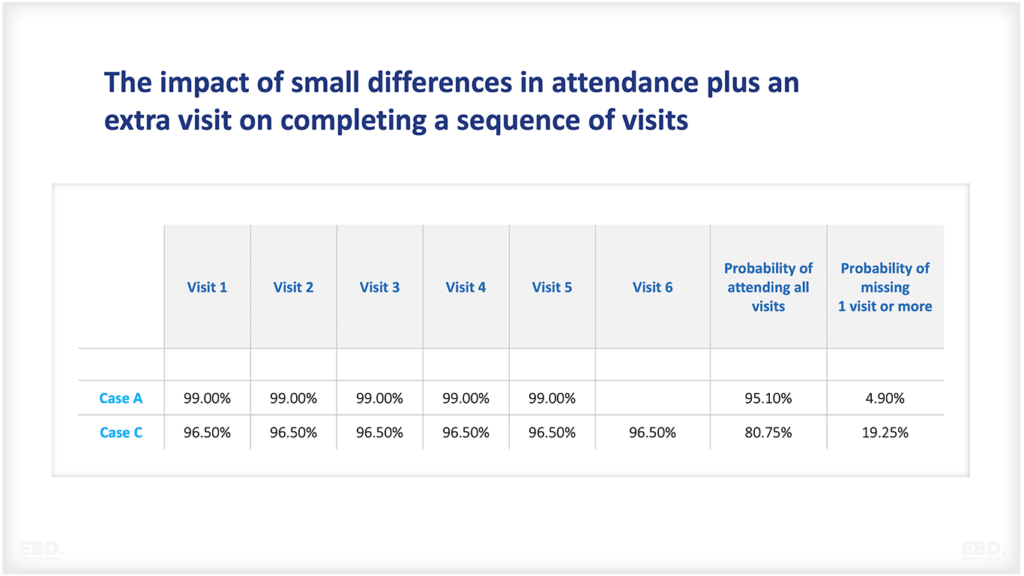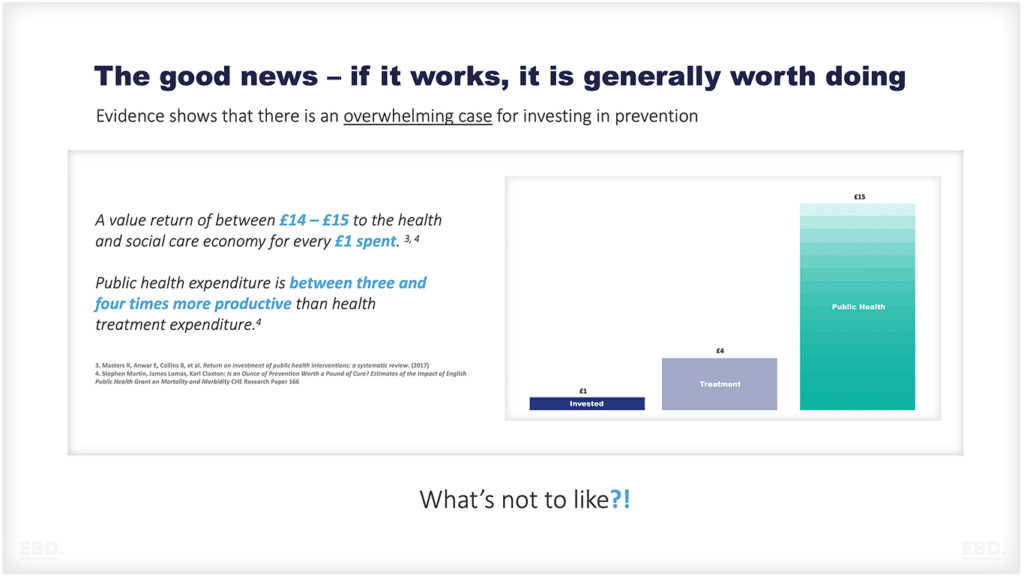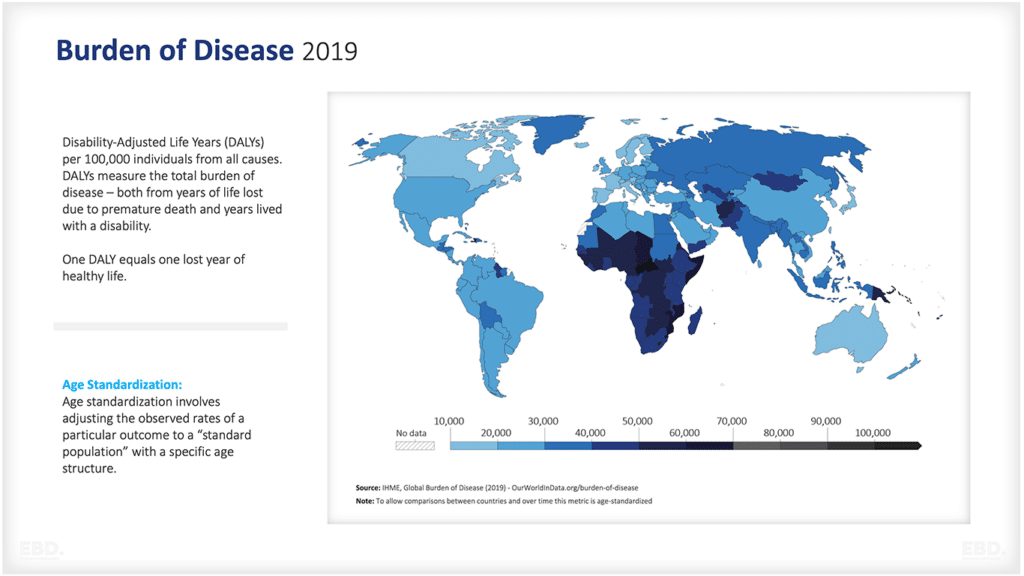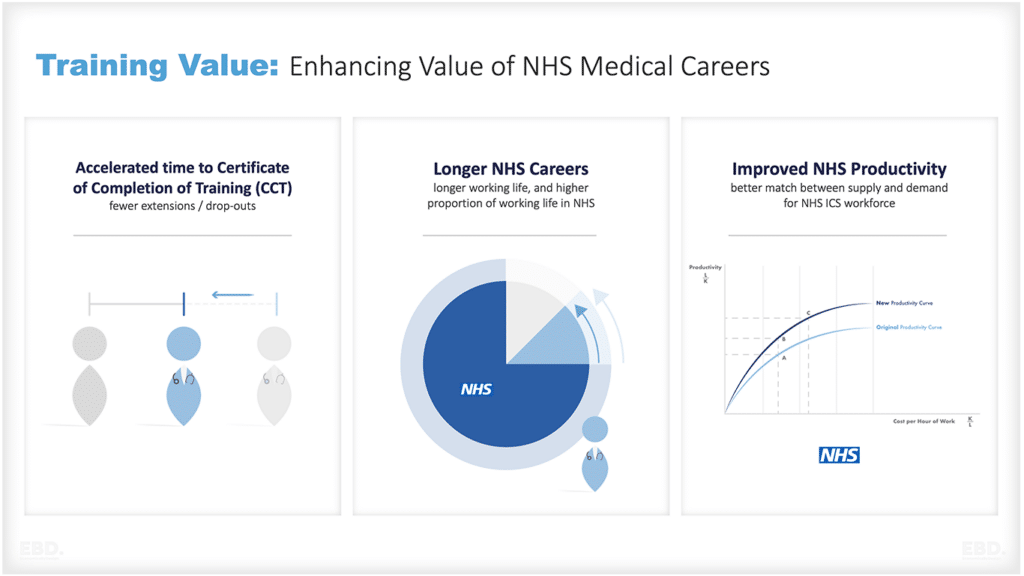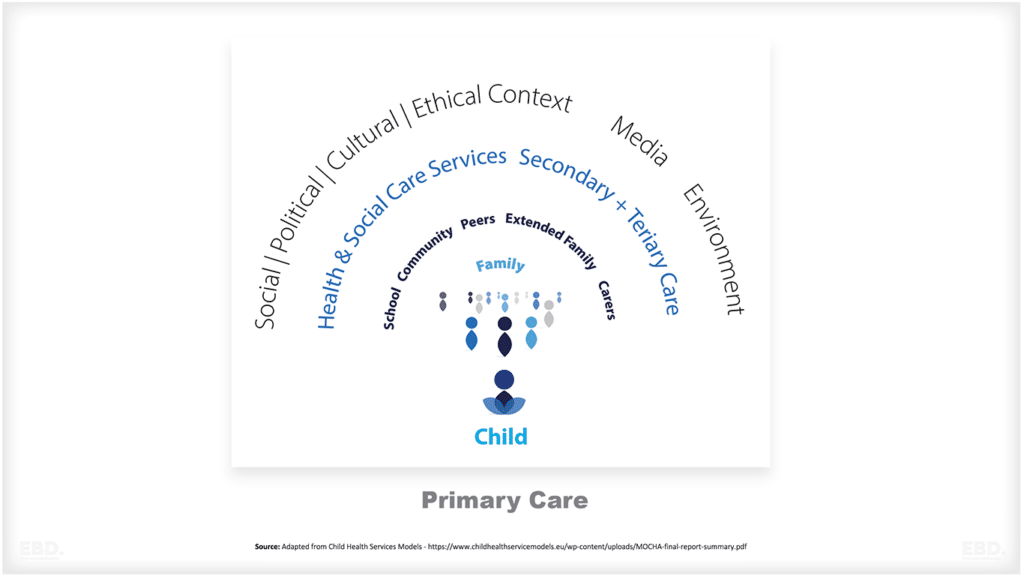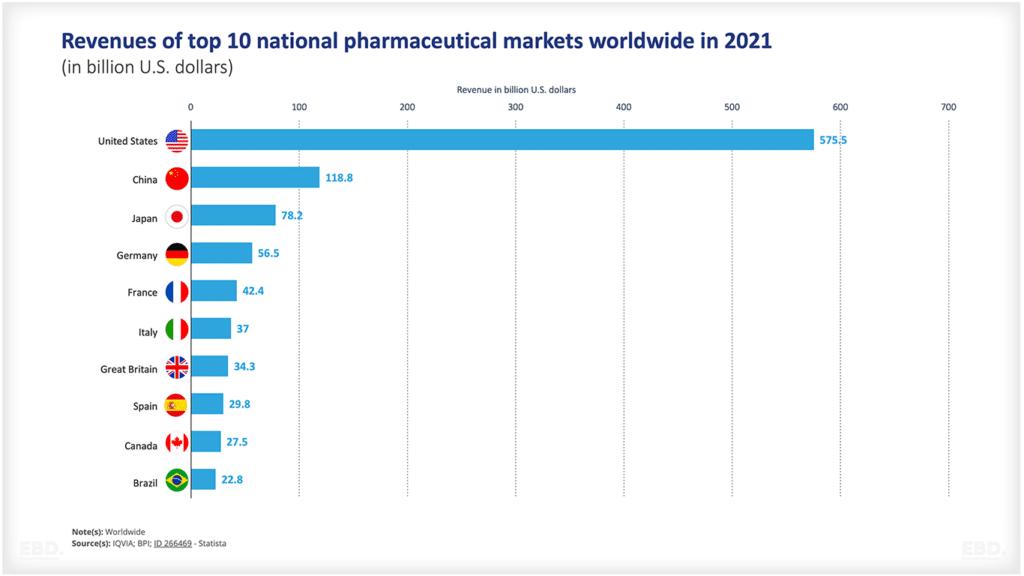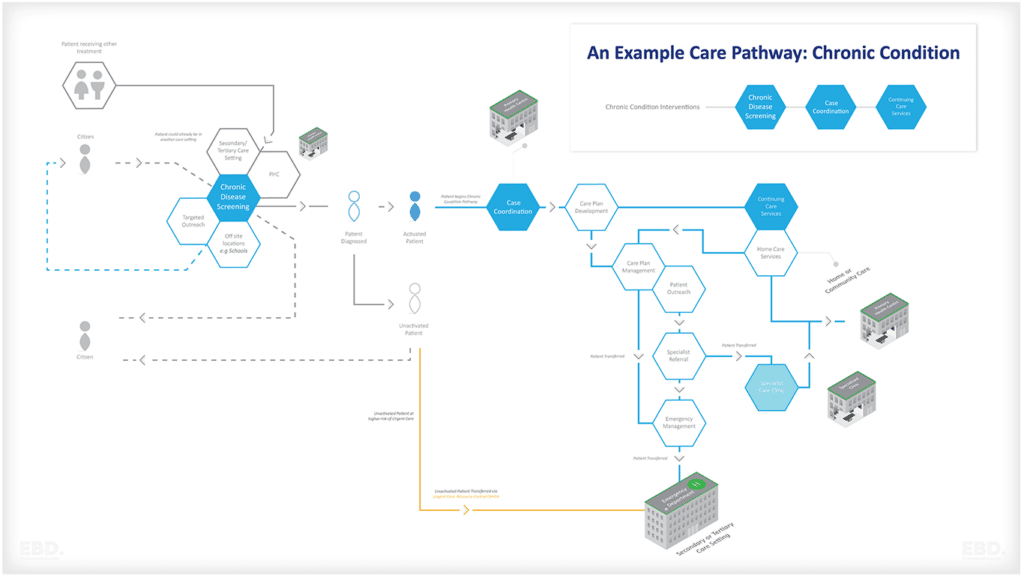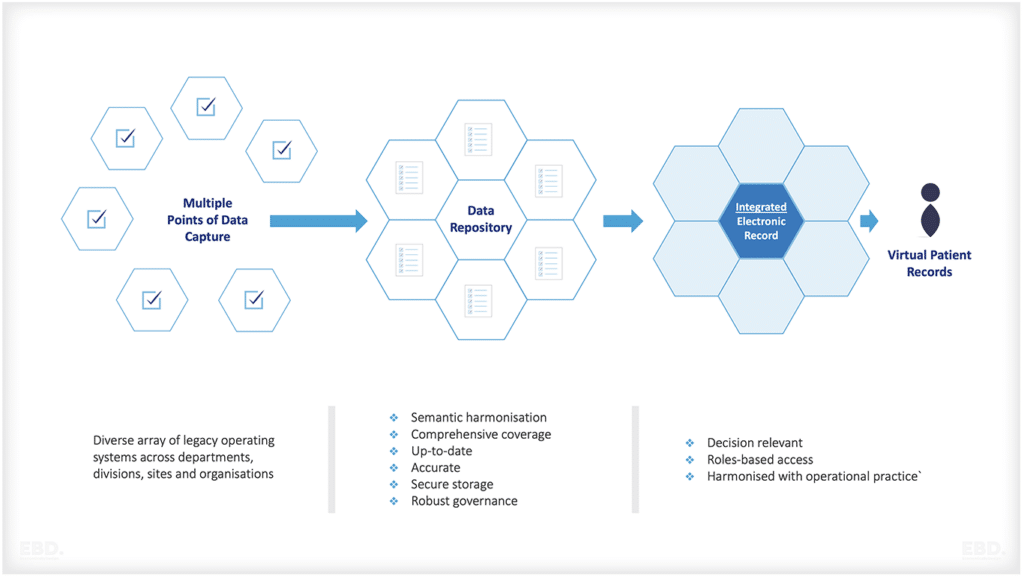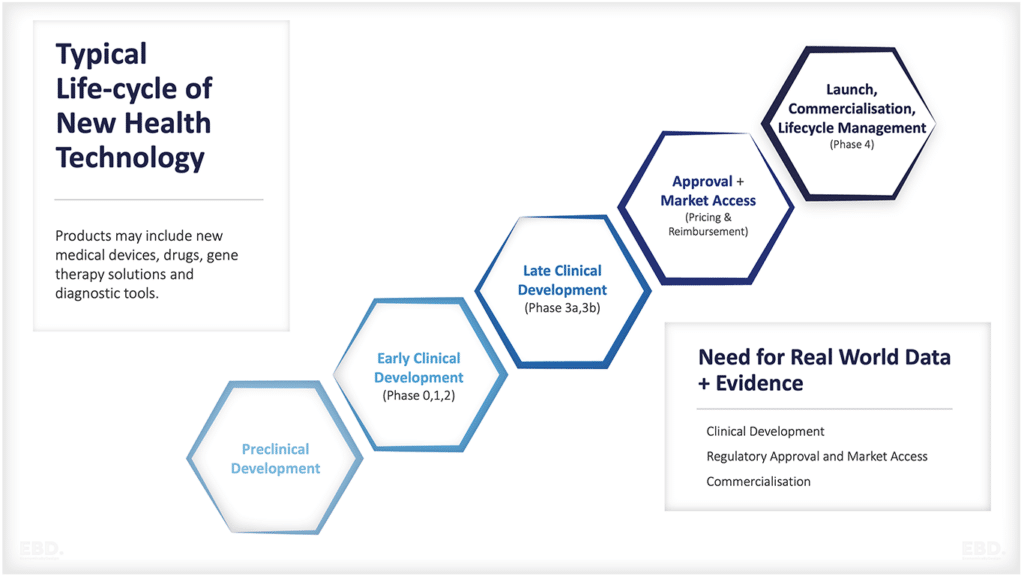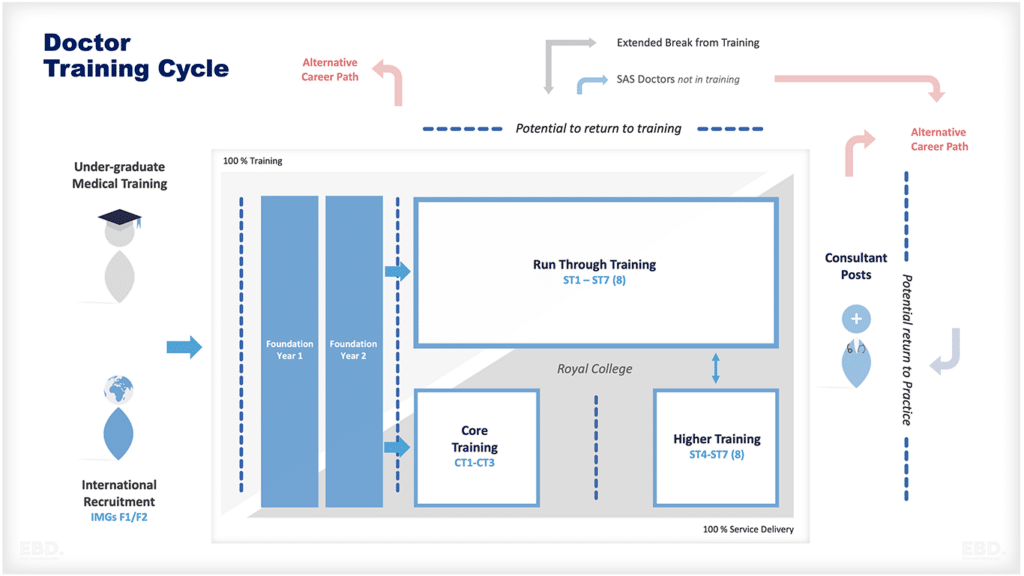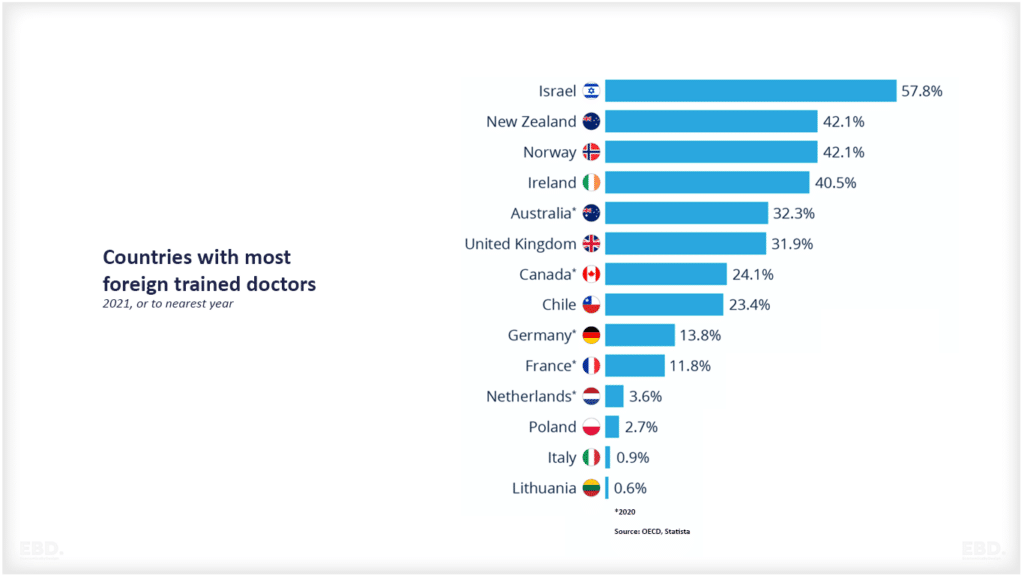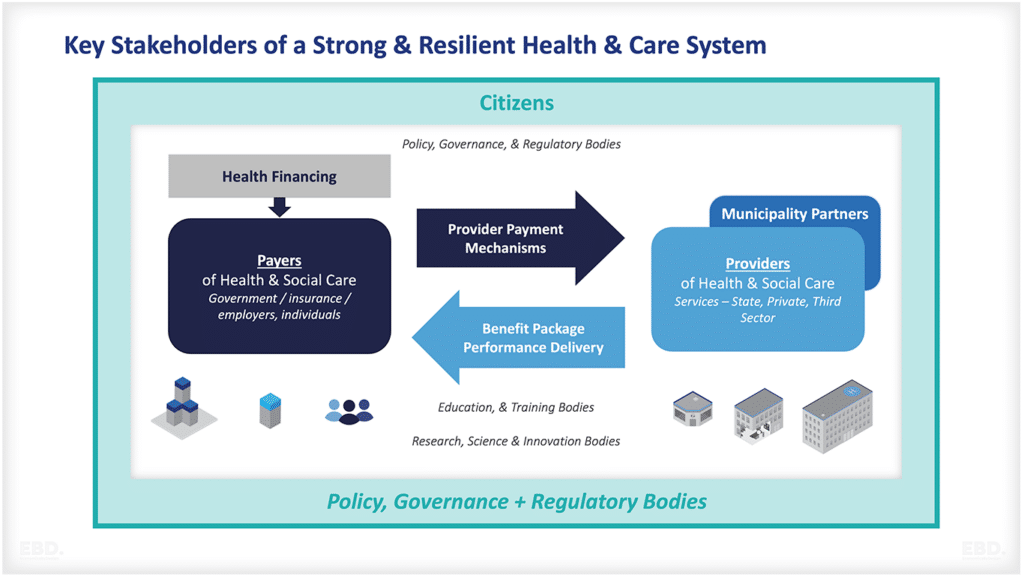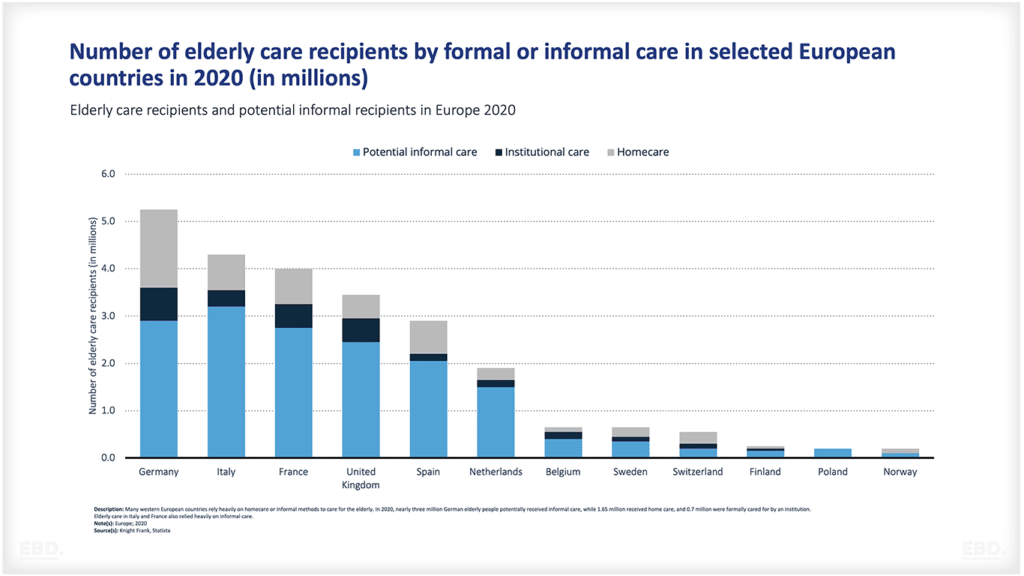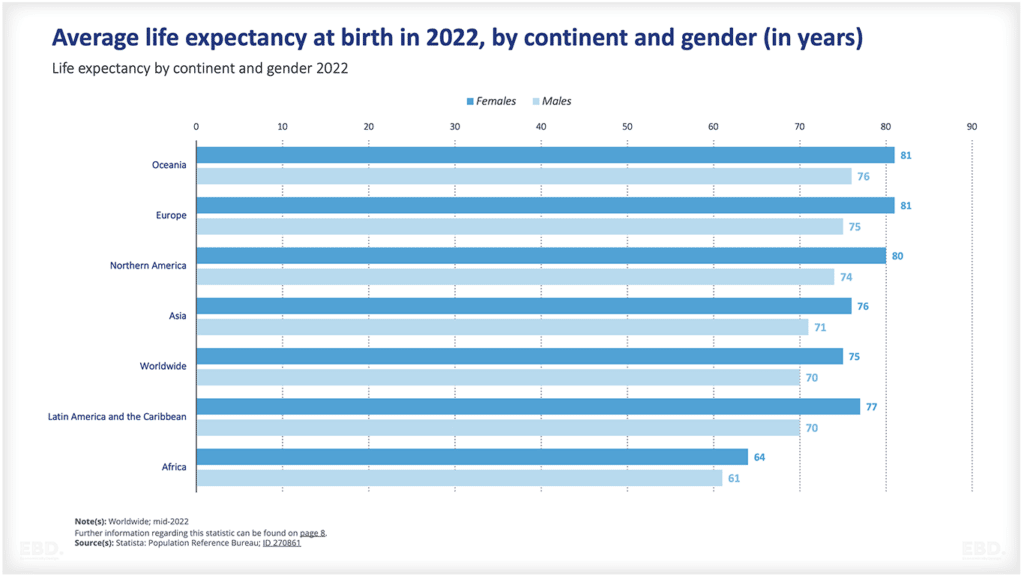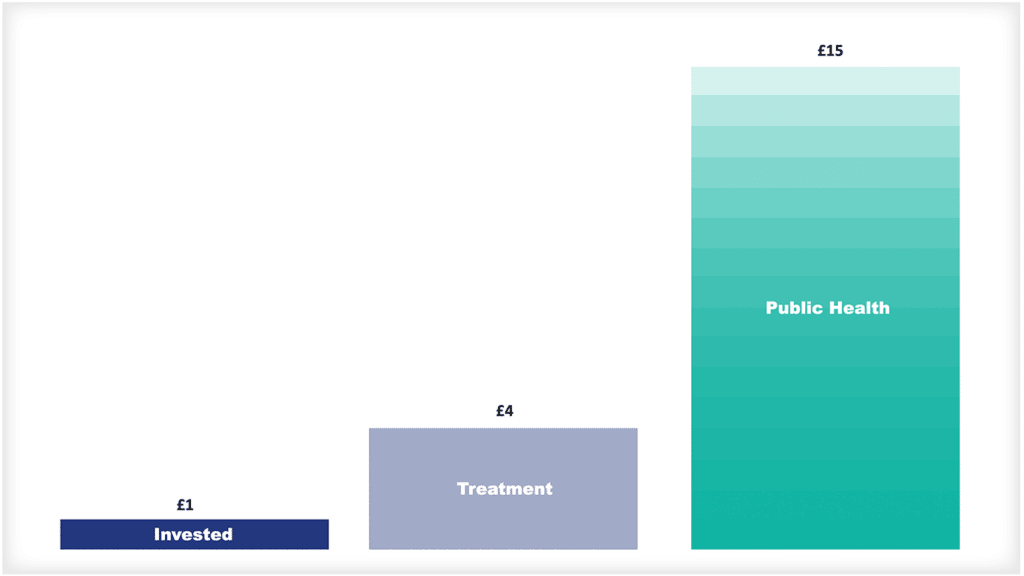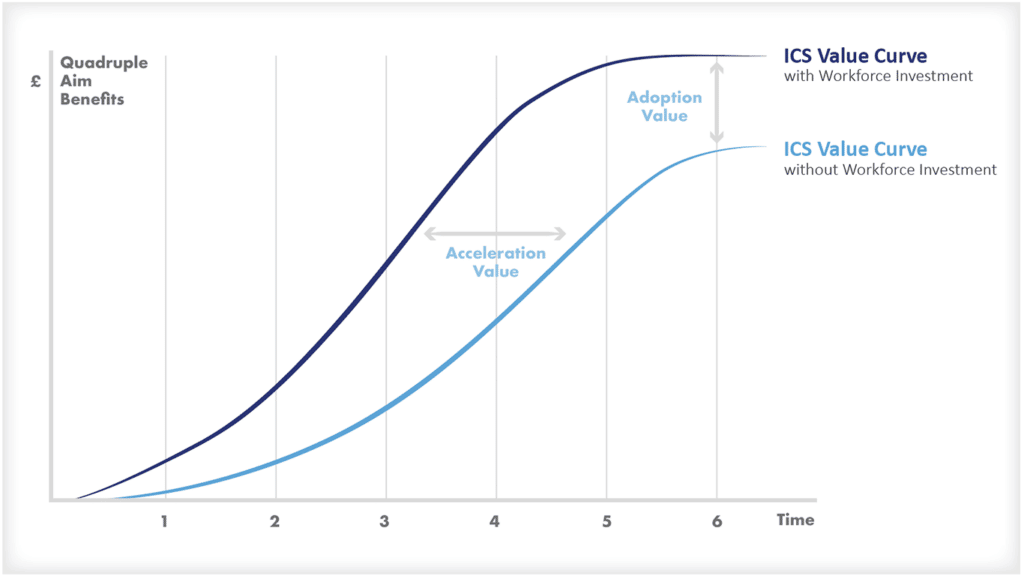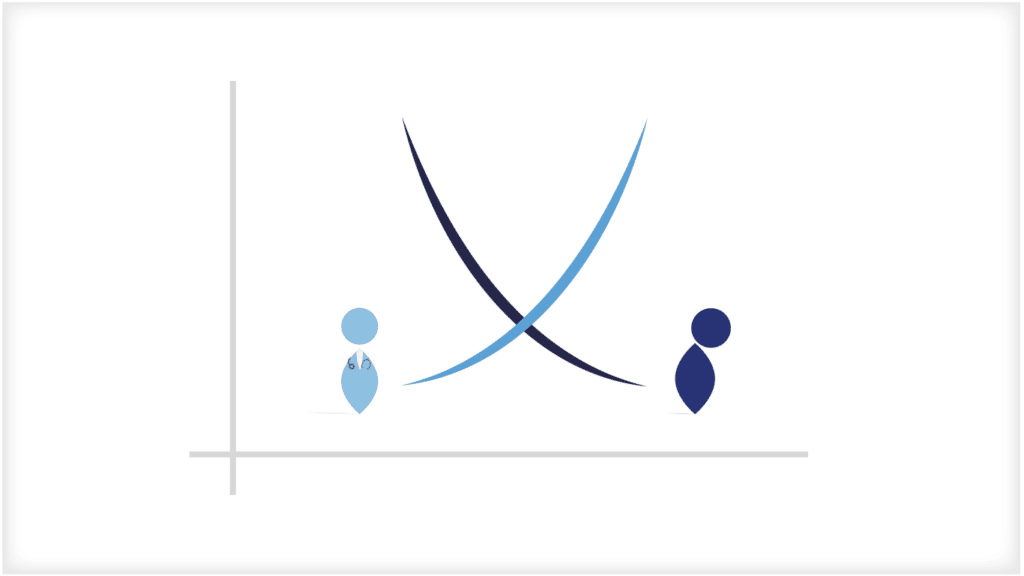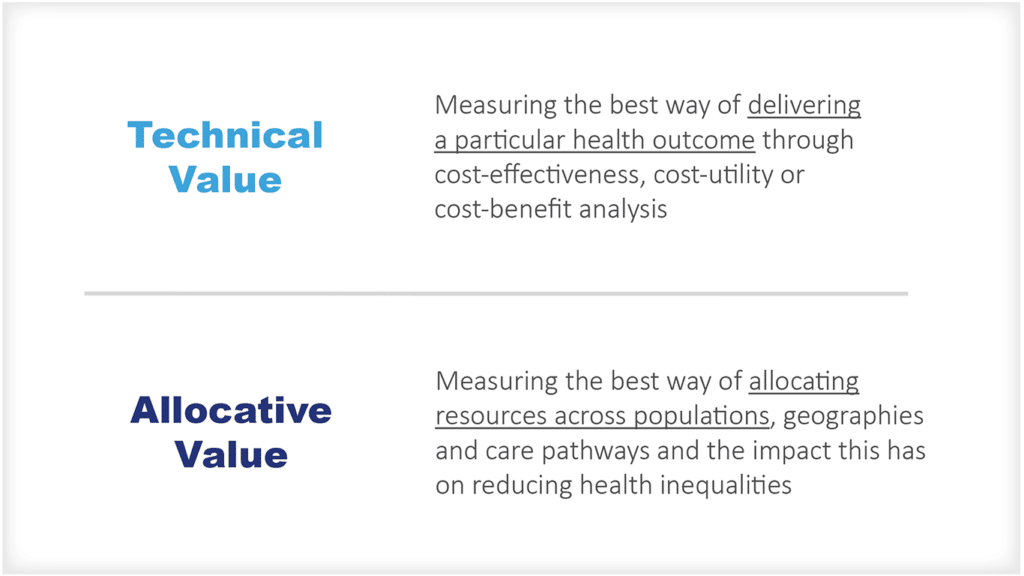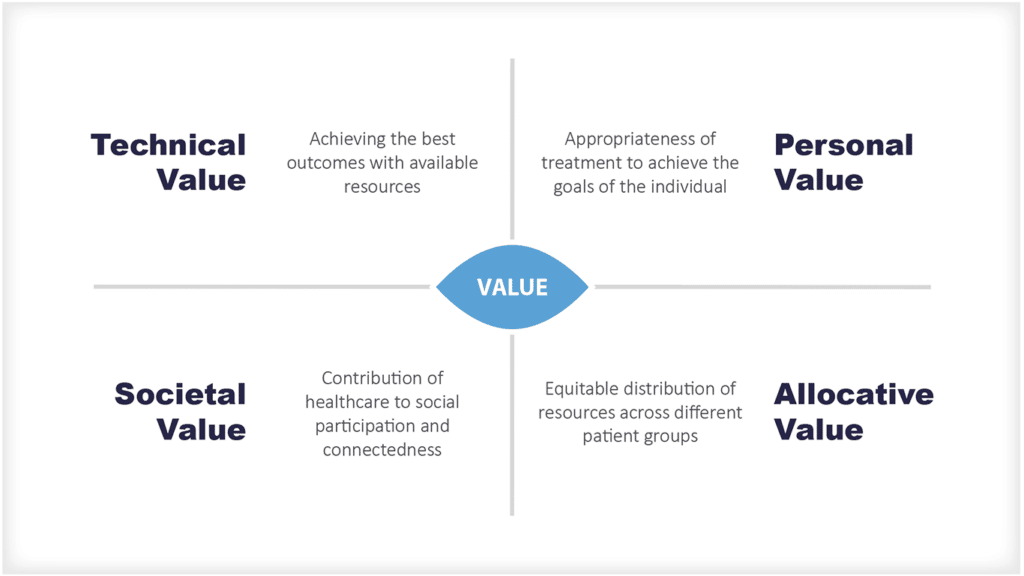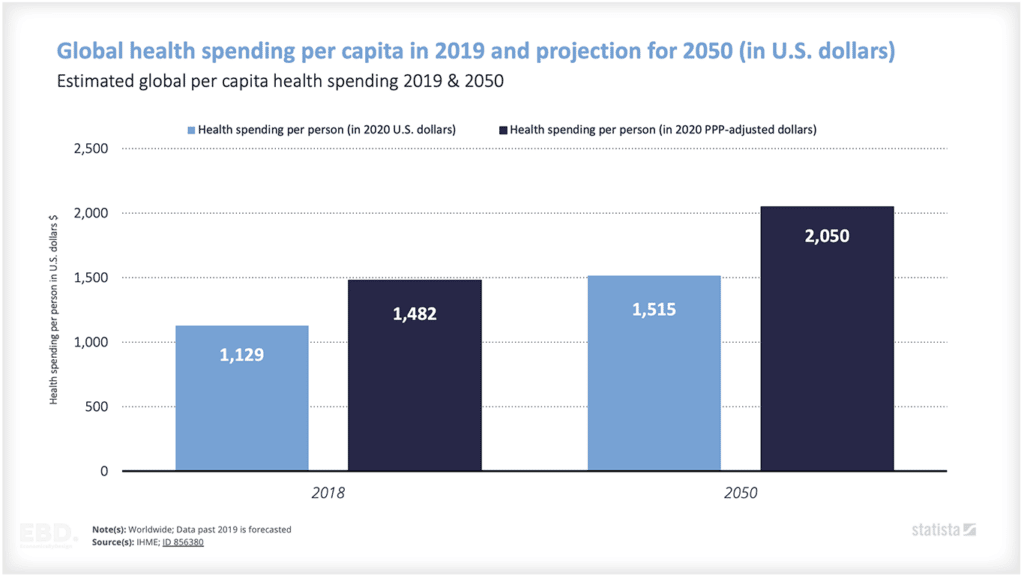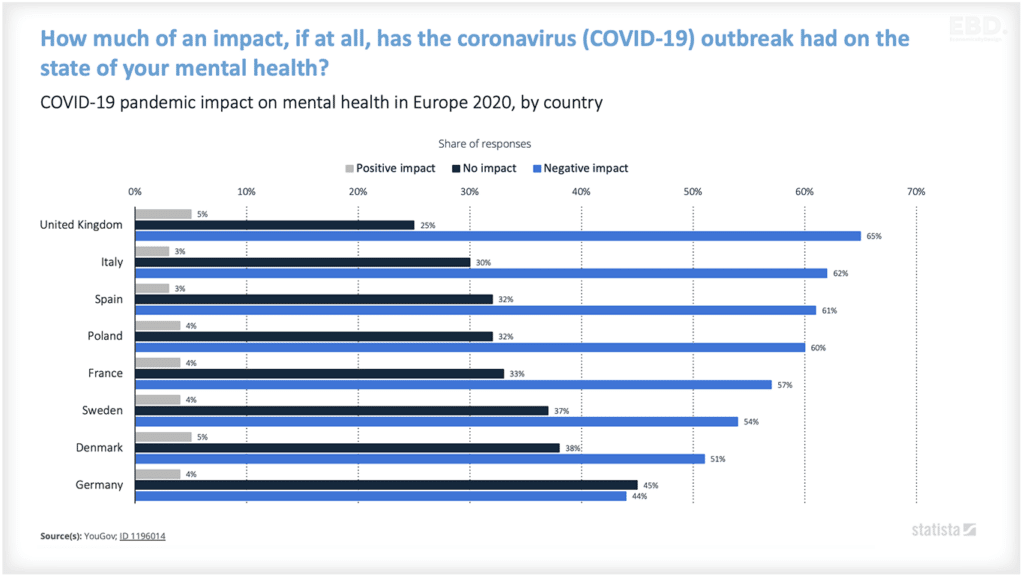Medical Technology ‘Med Tech’
Medical technology is a rapidly growing sector with numerous innovations emerging every day. This technology has the potential to revolutionise healthcare, bringing about significant improvements in patient outcomes while reducing the cost of healthcare services.
What are Medical Technologies?
Medical technology, also known as “med tech,” encompasses a diverse array of instruments, medical devices, software (including artificial intelligence), and materials specifically designed for medical applications. It serves various functions in healthcare, from basic items like band-aids to advanced technologies like body scanners and active implantable medical devices.
There is an extensive range of over 500,000 innovative technologies currently accessible, playing a significant role in enhancing health outcomes and fostering a more personalised care approach for patients.
Medical technology plays a vital role in healthcare, providing invaluable support to healthcare providers in terms of prevention, diagnosis, treatment, and ongoing management. It is found in hospitals, ambulances, and homes, contributing to the entire patient pathway.
History of Medical Technology ‘Med Tech’
The history of medical technology can be traced back to ancient times when people first began experimenting with remedies and treatments for illnesses. Ancient Egyptians used herbs and other natural substances to treat ailments, while the Chinese developed acupuncture thousands of years ago.
In the Middle Ages, advances in anatomy, physiology and chemistry enabled physicians to develop cures for diseases that had previously been untreatable. During the Industrial Revolution, medical technology underwent a dramatic transformation. Inventors such as Louis Pasteur and Edward Jenner brought about major breakthroughs with their discoveries in immunology and microbiology.
The invention of X-rays by Wilhelm Roentgen in 1895 marked a turning point in medical history. More recent developments have included genetic sequencing, MRI scanning and robotic surgery. Today, medical technology is enabling healthcare professionals to diagnose and treat diseases more effectively than ever before.
Categorising Medical Technologies ‘Med Tech’
Medical technologies encompass a broad range of products, services, and solutions that greatly enhance and even save lives. Within the medtech sector, these technologies can be classified into categories each serving a unique purpose.
Medical Devices (MDs)
Any instrument, apparatus, implement, machine, appliance, implant, in vitro reagent or other similar article that is used to diagnose, prevent or treat patients. Examples of medical devices include pacemakers and defibrillators.
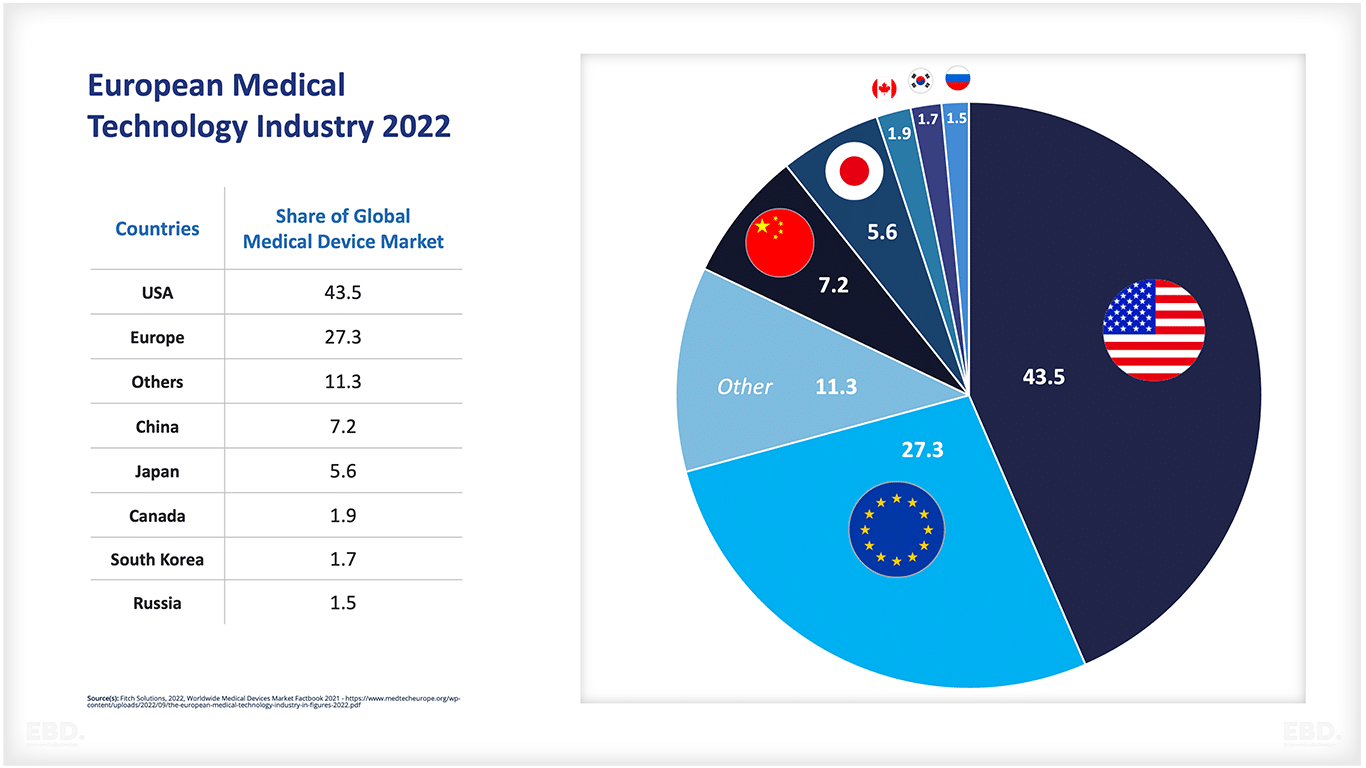
Countries |
Share of Global Medical Device Market |
| USA | 43.5% |
| Europe | 27.3% |
| Others | 11.3% |
| China | 7.2% |
| Japan | 5.6% |
| Canada | 1.9% |
| South Korea | 1.7% |
| Russia | 1.5% |
In vitro diagnostics (IVDs)
Are tests conducted outside of the body to detect, diagnose, and monitor diseases. Examples include diagnostic tests for infectious disease, such as the covid 19 lateral flow tests.
Digital Health
Use of digital health tools and technology to improve healthcare outcomes. Examples include telehealth and mobile medical applications.
Examples of New Technology
Robot-assisted Surgery
Robotic surgical systems are designed to enhance precision, reduce invasiveness and improve surgical outcomes in the operating room.
3D Printing
3D printing in healthcare is used to create artificial organs, allowing for better surgery and diagnostic planning. It also has potential applications in drug delivery, prosthesis manufacturing and tissue engineering.
Artificial Intelligence assisted Diagnostics
AI is being used to develop sophisticated algorithms that can assist with medical diagnosis by extracting data from patient records and providing insights not possible through traditional methods.
Wearable Medical Devices
Wearable devices have revolutionised the patient experience by allowing for continuous monitoring of vital signs and providing real-time data that can be used for better diagnosis, treatment and management of health conditions.
Personalised Medicine/Precision Medicine
This technology uses genetic analysis to create tailor-made treatments and therapies based on an individual’s specific genetic makeup. It is being used to develop more effective drugs with fewer side effects.
Remote Patient Monitoring
This technology uses connected medical devices to collect and transmit patient data remotely, allowing for better management of chronic conditions such as diabetes and heart disease.
Virtual Reality (VR) in Healthcare
VR is being used to simulate medical procedures for training and education, as well as to help reduce pain in patients by providing immersive distraction therapy.
Nanotechnology
This technology is being used to develop tiny particle-based drug delivery systems that can target specific cells in the human body for more effective treatments.
Automated Medical Image Analysis
Automation of medical image analysis has revolutionised the way doctors diagnose and treat diseases such as cancer, enabling faster and more accurate diagnosis.
Medical Apps
Customised mobile applications are being used to improve patient engagement in their own health management, enabling them to access medical support remotely and track the progress of their treatments.
The Medical Technology Industry
The medical technology industry has seen massive growth over the past few decades. It is now a multi-billion dollar market, with numerous companies manufacturing and developing a large product portfolio that is transforming the medical technology sector.
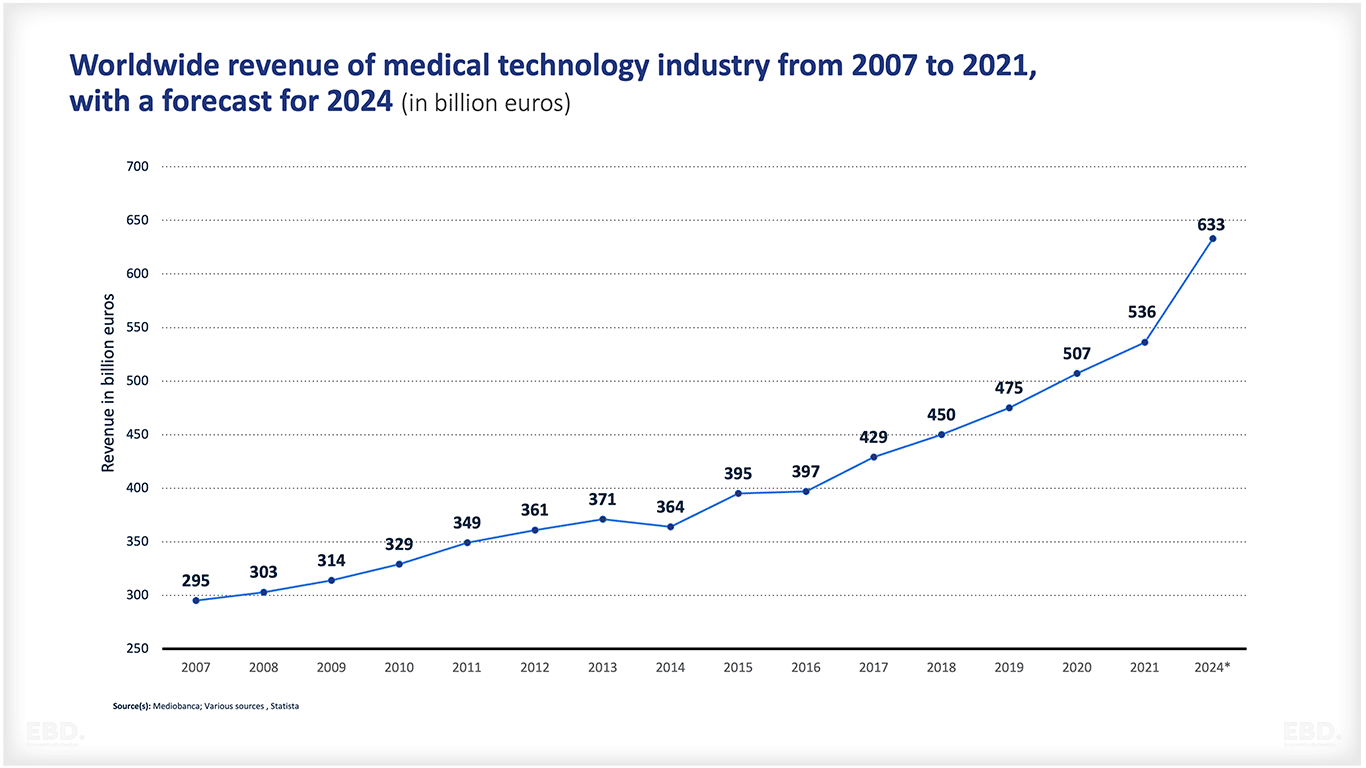
The current largest medtech companies are:
- Johnson & Johnson
- Medtronic
- Philips Healthcare
- GE Healthcare
- Siemens Healthineers
- Boston Scientific Corporation
- Stryker Corporation
- Becton Dickinson and Company (BD)
- Abbott Laboratories
- Cardinal Health
The market for medical technology is expected to continue growing. This projected growth is driven by increasing demand for innovative medical technologies, as well as an expanding population of aging individuals who require more advanced treatments and therapies.
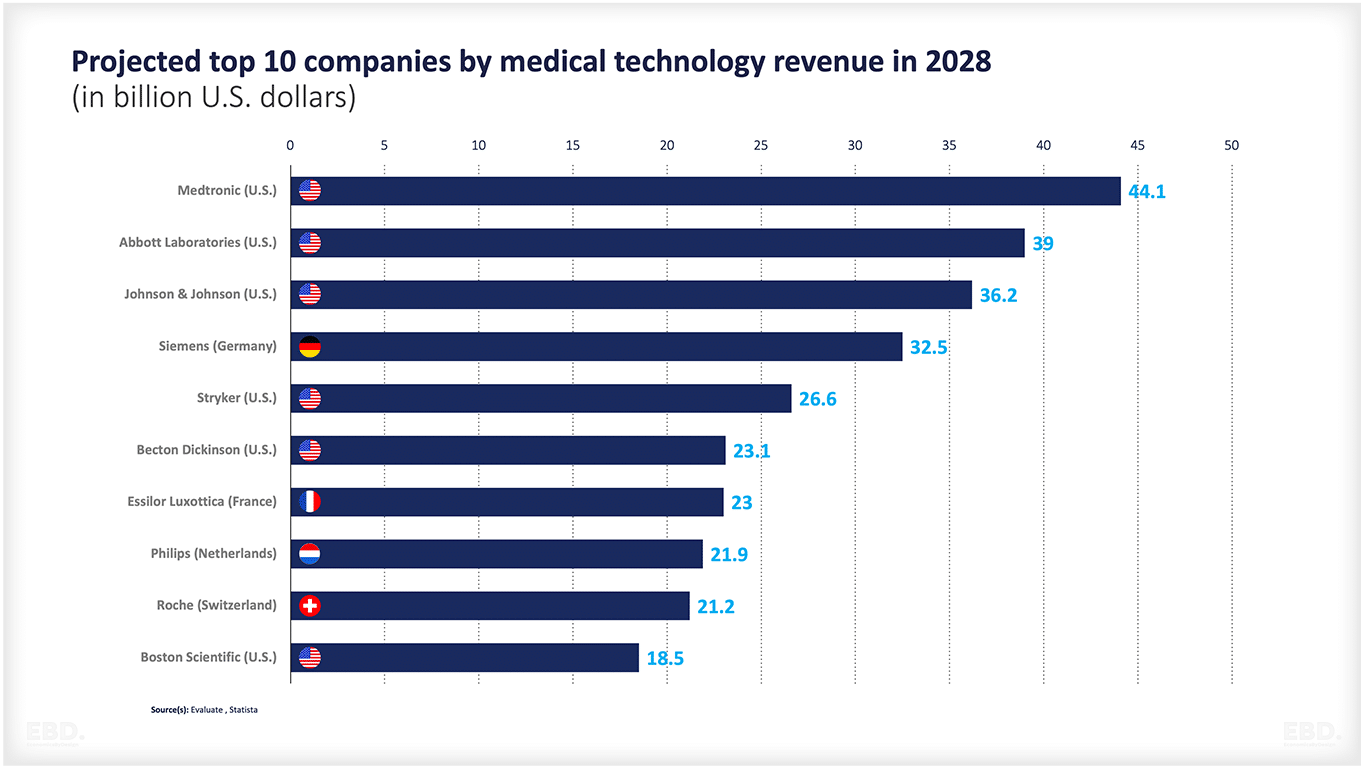
Medical Technology Employment
Medical technologies also create new job opportunities. As the industry grows, more technicians and engineers will be needed to design, develop, and service these advanced solutions. Companies specialising in medical technology will require sales personnel to market their products, as well as customer support teams to ensure customers get the most out of their devices.
Additionally, companies may need regulatory experts to meet compliance requirements and ensure their products meet safety standards. With the continuing demand for new medical technologies, these jobs will continue to be an important source of employment in the coming years.
In 2020, the medical technology sector in Europe employed over 760,000 people across a network of more than 33,000 companies dedicated to this field. The figure below illustrates the top 10 European countries with the highest direct employment in the medical technology industry, based on data from 2021.
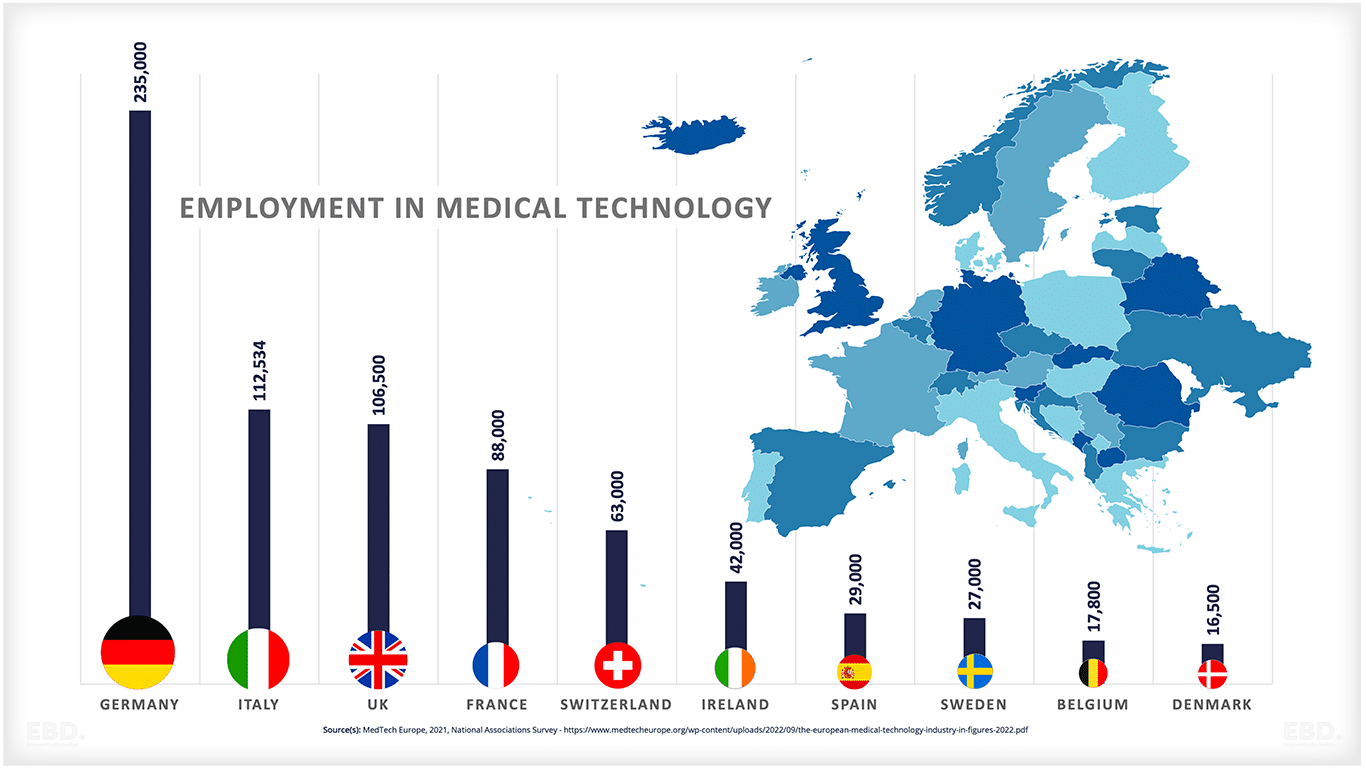
Country |
Employment in Medical Technology |
| Germany | 235,000 |
| Italy | 112,534 |
| UK | 106,500 |
| France | 88,000 |
| Switzerland | 63,000 |
| Ireland | 42,000 |
| Spain | 29,000 |
| Sweden | 27,000 |
| Belgium | 17,800 |
| Denmark | 16,500 |
How can Medical Technologies help Patients?
From early diagnosis of diseases to precision treatments, medical technologies can help identify and treat illnesses more accurately and quickly. This means that patients receive the best care possible in a timely manner, which has an overall positive impact on their quality of life.
Medical technologies can reduce the risk of complications associated with traditional treatments. They can also help to reduce patient anxiety and stress by providing more information about their condition in an easily accessible format.
For patients with diabetes, there are medical devices available to assist them. Continuous Glucose Monitors (CGMs), for instance, enable real-time tracking of glucose levels. This valuable information empowers patients to make necessary adjustments to their insulin dosages.
Additionally, insulin pumps can be programmed to administer predetermined amounts of insulin at specified times, thereby reducing the risk of hypoglycemia.
Med tech can also improve access to healthcare services, particularly for individuals who live in rural or remote areas. For example Telehealth which offers remote patient monitoring technologies enabling patients to access medical support without having to travel long distances, allowing for earlier diagnosis and treatment of health conditions.
Healthcare Staff
Medical technologies can help healthcare staff in various ways. For example, Electronic Health Records (EHRs) enable healthcare providers to access patient information quickly and easily, improving efficiency and accuracy of care. This also helps to streamline administrative processes, allowing hospitals and other healthcare facilities to run more efficiently.
Finally, medical technologies can help reduce risks associated with manual processes. For example, automated medical devices can eliminate the possibility of human error by providing precise measurements and accurate results. All of these benefits result in improved health and care excellence.
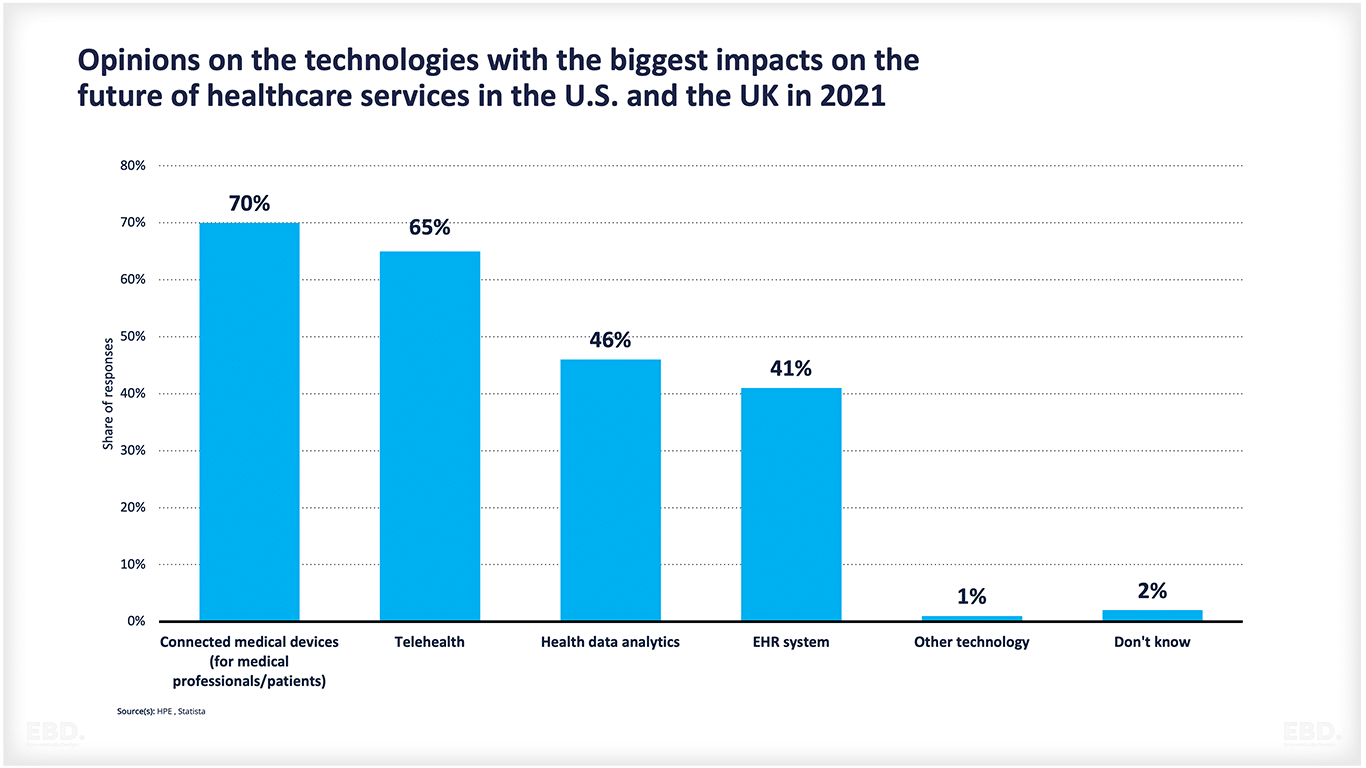
Health Systems
Medical and health technologies have the potential to revolutionise global healthcare systems. By improving diagnosis, treatment, and monitoring of diseases, these tools can reduce human suffering and mortality rates worldwide. Additionally, they can help address challenges such as overcrowding in hospitals by enabling more efficient care delivery.
Medical technology can also reduce costs associated with treatments by providing low-cost solutions that are more effective and easier to use. By helping to create a more equitable healthcare system, these tools can improve patient outcomes and lead to a better quality of life for everyone. Examples from ‘Adding Value: The Economic and Societal Benefits of Medical Technology‘
Hip and knee replacements play a crucial role in preventing disability and enabling patients to remain employed. Beyond personal well-being, these procedures have far-reaching positive effects, preserving independence and enhancing opportunities for patients to return to work.
In 2009, approximately 11,000 individuals in England and Wales were able to resume employment as a result of hip replacements, resulting in an annual saving of £37.4 million for the UK welfare system each year of their working lives.
Implantable cardioverter-defibrillators (ICDs) serve as a safety net for individuals at high risk, effectively averting sudden cardiac arrest in 98% of cases. The device allows the majority of patients to return to work, improving their quality of life and reducing the burden on healthcare resources.
In the United Kingdom alone, ICD implantation saves £3.5 million annually, with the potential for savings of £7.1 million per year if more people were equipped with ICDs, aligning with the European rate.
How is the Medical Technology Industry Regulated
The medtech industry is highly regulated due to the potential risks associated with products and services. The regulatory requirements vary depending on the type of product or service and geography, but generally include registration with a relevant body and adherence to quality standards and safety requirements.
Examples of medical technology regulatory bodies:
- The US Food and Drug Administration (FDA)
- European Medicines Agency (EMA)
- Medical Device Regulation (MDR) in the EU
- Japanese Pharmaceuticals and Medical Devices Agency (PMDA)
- Australian Therapeutic Goods Administration (TGA)
- The UK Medicines and Healthcare products Regulatory Agency (MHRA)
The process of getting a medical device approved is similar to that of drug approval. It varies depending on the regulatory body and type of product. Generally, medical devices must go through clinical trials to test their safety and efficacy before being approved for use in human beings.
After this, the manufacturer must submit an application to the relevant regulatory body with evidence that the device meets all applicable standards. The approval process typically involves reviews from experts and may take several years. Once a device is approved, it will be monitored to ensure that it continues to meet safety standards.
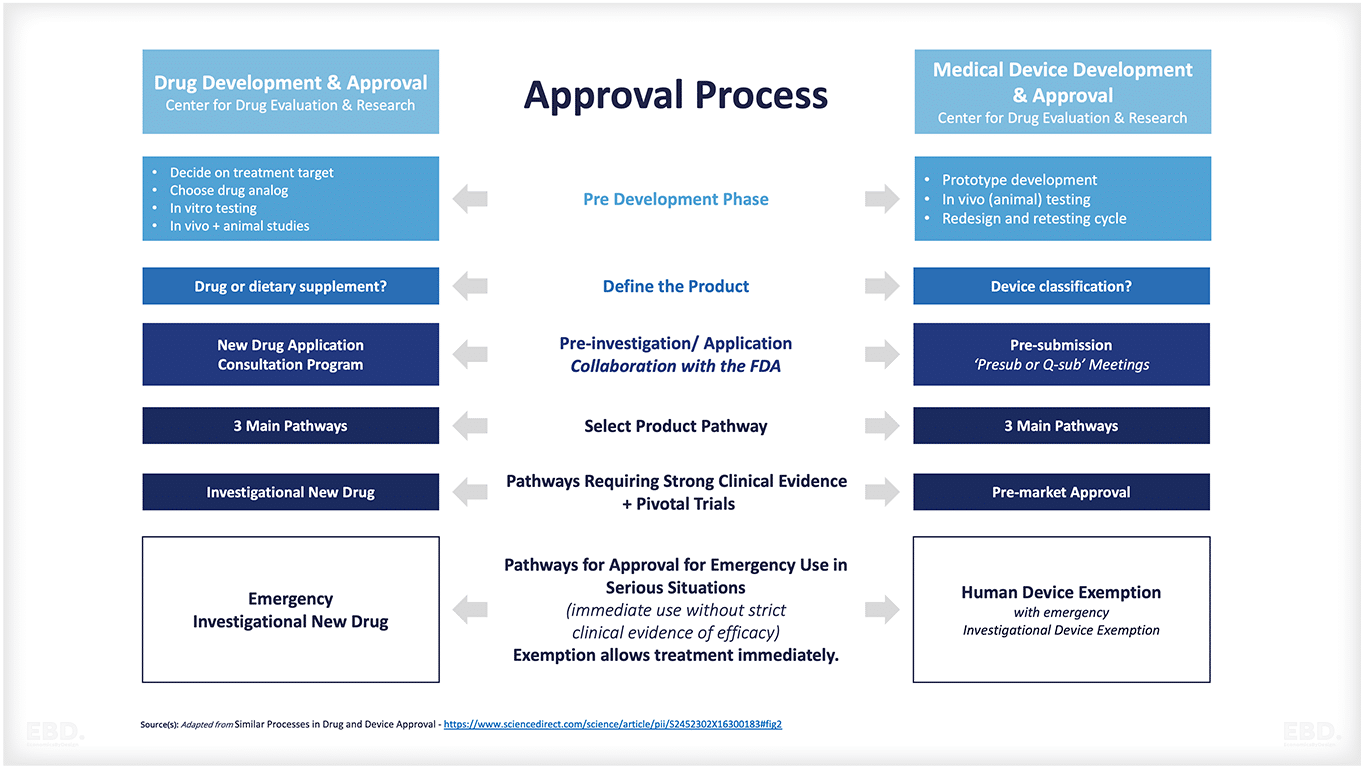
Assessing the Value of Medical Technology
Health payers and providers across the world are starting to develop methods of appraising the value of new medical technologies and methods and techniques are starting to develop.
In the UK The Medical Technologies Evaluation Programme has recently been launched by the National Institute for Health and Care Excellence to help Manufacturers, distributors and agents of medical device companies as well as health and social care staff, patients and the public to identify and propose technologies likely to improve health outcomes, patient experience, or improve health system efficiency.
Economic appraisal requirements depend on the technology, its role in a treatment pathway, and the likely costs of implementation.
Challenges and Issues
Five Challenges Facing the Medical Technology Industry
- Cost: Development of medical technology requires significant funding which can be a barrier for both healthcare providers and patients, as the devices and services are often expensive. Regulatory requirements add to the cost of developing medical technology, increasing prices and making it difficult for companies to remain competitive in the market.
- Data privacy: As medical technology becomes more sophisticated, there are increasingly greater concerns over the security of data and patient privacy. Medical technology must comply with regulations to ensure that patient information is kept safe and secure.
- Accessibility: Lack of access to medical technology can prevent individuals from receiving the care they need in a timely fashion, particularly in areas where resources are scarce or cost prohibitive. Governments, organisations, and companies must work together to ensure that everyone has access to necessary medical technologies.
- User adoption: Medical technology can be complex and difficult to use, and it must be designed with user-friendly features for rapid adoption. Additionally, users may need training in order to understand how to use the device properly and safely.
- Regulatory compliance: Keeping up with regulatory requirements can be challenging for medical technology companies. Companies must stay up-to-date with the latest regulations in order to ensure that their products are safe and effective.
Despite these challenges, medical technology has the potential to transform healthcare and improve access to care worldwide. By investing in research and development, innovating new technologies, adhering to regulatory requirements, and ensuring accessibility to these devices, we can create a more equitable healthcare system for all.
Future Trends
In 2023, medical technology is expected to make leaps and bounds in the area of advanced treatments. One example is gene therapy, which involves using DNA sequences to modify genes for therapeutic purposes.
This could be used to treat previously untreatable conditions such as cancer and hereditary diseases.
Gene therapy medical technology being developed:
- CRISPR gene editing
- Gene replacement therapies
- RNA interference (RNAi) therapeutics
- Exon skipping treatments for Duchenne muscular dystrophy
- Stem cell therapy
The medical technologies of the future will become increasingly sophisticated, enabling better diagnosis and treatment.
Artificial Intelligence is already being used to analyse medical images for more accurate diagnosis, and machine learning can be applied to healthcare data to identify patterns in diseases.
Artificial Intelligence (AI) medical technologies being developed:
- Natural language processing (NLP)
- Computer vision
- Automated image analysis
- Medical decision support systems
The projection of AI market size in healthcare is predicted to grow exponentially.
